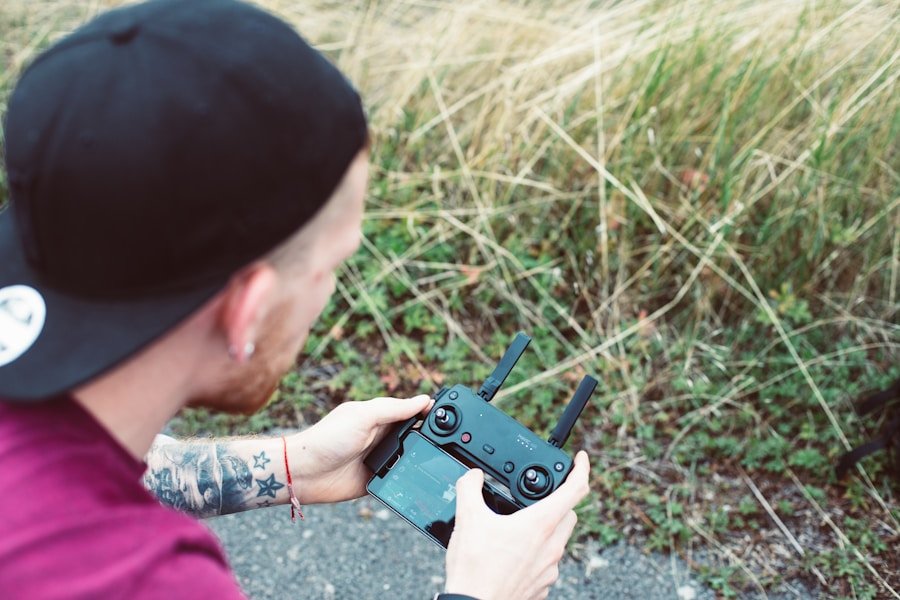Drone flight modes are an essential aspect of operating a drone, as they determine how the drone behaves in flight. There are several different flight modes that can be utilized, each with its own specific purpose and functionality. Understanding the basics of drone flight modes is crucial for any drone pilot, as it allows for greater control and precision when operating the drone.
One of the most common flight modes is the manual mode, which gives the pilot full control over the drone’s movement. This mode is ideal for experienced pilots who are comfortable with flying and want to have complete control over the drone’s movements. Another common flight mode is the GPS mode, which utilizes the drone’s GPS system to maintain a stable position in the air. This mode is great for capturing smooth and steady footage, as it helps to minimize any unwanted movement or drift. Additionally, there are other flight modes such as altitude hold, sport mode, and return to home mode, each with its own unique functionality and purpose.
Navigating Through Different Flight Modes
Navigating through different flight modes can be a bit overwhelming for new drone pilots, as there are several options to choose from. However, understanding the specific purpose and functionality of each flight mode can help pilots make informed decisions when selecting the appropriate mode for their specific needs. For example, if a pilot is looking to capture smooth and stable footage, they may want to utilize the GPS mode, which helps to maintain a steady position in the air. On the other hand, if a pilot is looking to fly at higher speeds and perform more dynamic maneuvers, they may want to switch to sport mode, which allows for greater agility and responsiveness.
It’s important for pilots to familiarize themselves with the different flight modes available on their specific drone model, as each mode may have different names or functionalities depending on the manufacturer. Additionally, some drones may offer customizable flight modes, allowing pilots to tailor the drone’s behavior to their specific preferences. Navigating through different flight modes requires practice and experimentation, as pilots will need to become familiar with how each mode affects the drone’s behavior in flight.
Exploring the Functionality of Each Flight Mode
Each flight mode offers its own unique functionality and purpose, making it important for pilots to explore and understand how each mode operates. For example, the GPS mode utilizes the drone’s GPS system to maintain a stable position in the air, making it ideal for capturing smooth and steady footage. This mode is great for aerial photography or videography, as it helps to minimize any unwanted movement or drift. On the other hand, sport mode is designed for more dynamic flying, allowing for higher speeds and greater agility. This mode is ideal for pilots who want to perform more advanced maneuvers or fly in more challenging environments.
Altitude hold mode is another common flight mode that allows the drone to maintain a consistent altitude without input from the pilot. This mode is great for capturing aerial shots from a fixed height, as it helps to minimize any unwanted altitude changes. Return to home mode is also a valuable feature that allows the drone to automatically return to its takeoff point with the push of a button. This can be especially useful in emergency situations or if the pilot loses sight of the drone.
Tips for Switching Between Flight Modes
Switching between flight modes can be a seamless process with the right approach and preparation. One important tip for switching between flight modes is to familiarize yourself with each mode’s specific functionality and purpose before takeoff. This will help you make informed decisions about which mode is best suited for your specific needs and goals. Additionally, it’s important to practice switching between flight modes in a controlled environment before attempting more complex maneuvers or flights.
Another tip for switching between flight modes is to ensure that you have a clear understanding of how each mode affects the drone’s behavior in flight. This will help you anticipate how the drone will respond when switching between modes and make adjustments accordingly. It’s also important to stay calm and focused when switching between flight modes, as sudden changes in behavior can catch pilots off guard if they are not prepared.
Understanding the Importance of Flight Modes in Different Scenarios
Flight modes play a crucial role in different scenarios, as they can greatly impact the drone’s behavior and performance in flight. For example, in aerial photography or videography, utilizing the GPS mode can help to capture smooth and steady footage by minimizing any unwanted movement or drift. This can be especially important when capturing professional-grade footage that requires a high level of precision and stability.
In more dynamic flying scenarios, such as racing or performing advanced maneuvers, utilizing sport mode can provide greater agility and responsiveness, allowing pilots to push the limits of their drone’s capabilities. Additionally, in emergency situations or if a pilot loses sight of their drone, return to home mode can be a valuable feature that allows the drone to automatically return to its takeoff point with the push of a button.
Common Misconceptions About Drone Flight Modes
There are several common misconceptions about drone flight modes that can lead to confusion or misunderstanding among pilots. One common misconception is that all drones have the same flight modes and functionality, when in reality, different drone models may offer different modes or features. It’s important for pilots to familiarize themselves with their specific drone model and understand its unique capabilities and limitations.
Another common misconception is that switching between flight modes is a simple and straightforward process that does not require any preparation or practice. In reality, switching between flight modes requires careful consideration and practice, as sudden changes in behavior can catch pilots off guard if they are not prepared. It’s important for pilots to take the time to familiarize themselves with each mode’s specific functionality and purpose before takeoff.
Advanced Techniques for Maximizing the Potential of Flight Modes
For experienced pilots looking to maximize the potential of their drone’s flight modes, there are several advanced techniques that can be utilized. One advanced technique is to utilize customizable flight modes, if available, to tailor the drone’s behavior to specific preferences or flying styles. This can allow pilots to fine-tune their drone’s performance and responsiveness for more precise control.
Another advanced technique is to experiment with combining different flight modes to achieve specific goals or maneuvers. For example, combining altitude hold mode with GPS mode can help pilots capture smooth and steady footage from a fixed height while maintaining a stable position in the air. Additionally, practicing switching between flight modes in real-world scenarios can help pilots become more comfortable and confident with their drone’s capabilities.
In conclusion, understanding the basics of drone flight modes is crucial for any drone pilot looking to maximize their control and precision when operating their drone. Navigating through different flight modes requires practice and experimentation, as pilots will need to become familiar with how each mode affects their drone’s behavior in flight. Exploring the functionality of each flight mode can help pilots make informed decisions about which mode is best suited for their specific needs and goals. Tips for switching between flight modes include familiarizing yourself with each mode’s specific functionality and purpose before takeoff and practicing switching between modes in a controlled environment. Understanding the importance of flight modes in different scenarios can help pilots make informed decisions about which mode is best suited for their specific needs and goals. Common misconceptions about drone flight modes include assuming that all drones have the same flight modes and functionality when in reality different drone models may offer different modes or features. Advanced techniques for maximizing the potential of flight modes include utilizing customizable flight modes if available and experimenting with combining different flight modes to achieve specific goals or maneuvers. By understanding these key aspects of drone flight modes, pilots can enhance their flying experience and capture stunning footage with precision and control.








